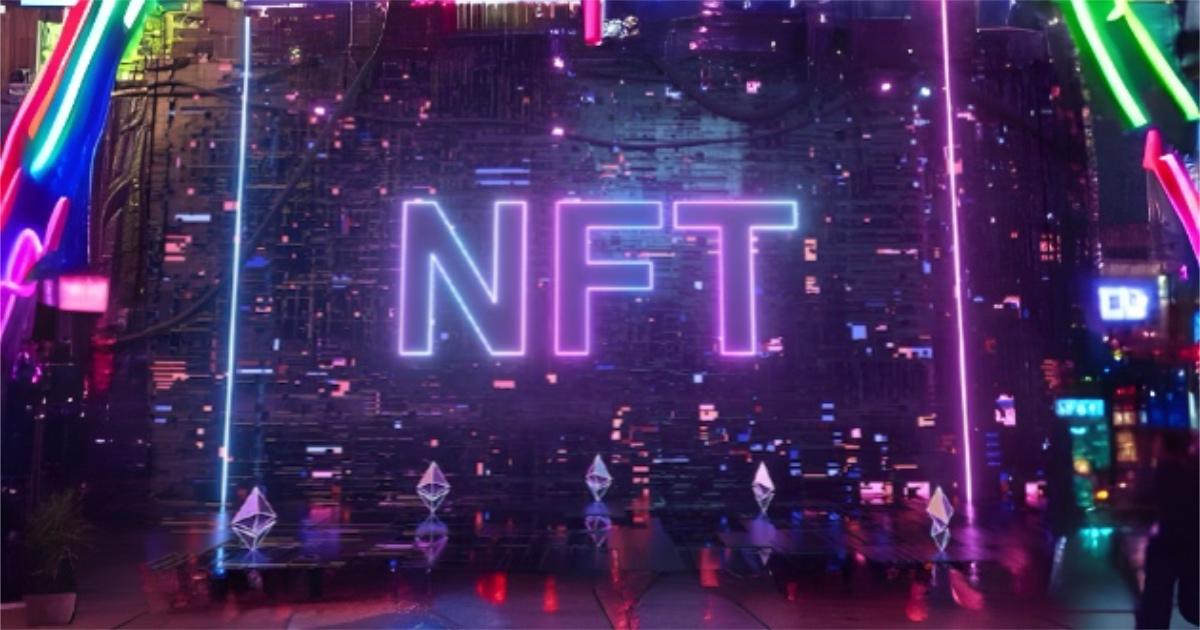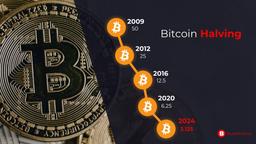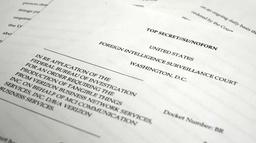Noob Question: What Are NFTs and How Do They Work?

Beeple, an online artist, sold an NFT for $69.3 million. If you couldn’t tell, that’s a whole lot of money! Many people see these kinds of dollar signs and immediately want to be involved in the world of NFTs. (And for good reason.) You may not walk away with millions of dollars to blow on a mansion or a new car. Still, the world of NFTs is an expanding place of innovation, creation, and sometimes bizarre happenings. It’s a digital dimension worth exploring. There’s a good chance you’re wondering, “But wait, how do NFTs work, and what are they?”
Most readers are thinking the same thing, so thanks for asking. We’ll explain it all down below.
Let’s Get (Non)Fungible
When asking, “What are NFTs?” it wouldn’t be enough to answer, “Oh, they’re non-fungible tokens.”
Even though that’s the most straightforward answer, it still doesn’t switch on a lightbulb for many people. Does anyone even know what the word ‘fungible’ means?
Fungible is another word for interchangeable. Fungible assets include stock shares, cryptocurrency, or cash.
On the other hand, a non-fungible asset is something that is one-of-a-kind. It can’t be exchanged while retaining its original value. Non-fungible assets include a home or an expensive piece of art you stole from a museum.
(Please don’t steal art from a museum.)
Why Are These Tokens Non-Fungible?
These tokens aren’t like the ones you see in Mario Kart. Instead, they’re pieces of data stored through a crypto blockchain.
This method of storage allows each NFT to become its authentic self. In addition, Crypto protects NFTs from becoming duplicated, stolen, or altered.
Almost any digital asset can become an NFT. Music, voice recordings, electronic signatures, GIFs, drawings, and so much more have become NFTs through artists’ creative (or unstable) minds worldwide.
Well, in a less creative instance, the CEO of Twitter sold his first tweet as an NFT for $2.9 million. We aren’t sure why anyone would want that, but we aren’t here to judge!
What Happens When Someone Buys NFT Art?
If you’re interested in learning how to buy NFTs, it’s worth knowing how ownership operates in the crypto world.
Those who pay the money to buy a non-fungible token have ownership rights over the asset. They own the painting or the 30-second audio of a man screaming. (We aren’t sure if that’s a thing, but we wouldn’t be surprised.)
While the buyer gains ownership rights over the asset, the original artist can retain reproduction rights and copyrights.
Things become awkward when people realize that you can right-click on a piece of visual art on the internet to save it on your computer. BUT, even if you did that with a costly piece of NFT art, you still wouldn’t have the ownership rights.
Owning an NFT is an internet flex.
Back Up. How Does Blockchain Work?
This whole ‘NFTs explained’ deep dive approach doesn’t make sense if you’re still learning about cryptocurrency and blockchain technology. (We’ll do our best to explain it, but you can check out a deeper look into cryptocurrency over here.)
In the simplest explanation, blockchain is a digitalized, decentralized database. The databases are constructed of unique pockets of data blocks, and the collection forms a ledger. This ledger keeps a detailed record of all the transactions within its specific blockchain.
Because blockchain technology is decentralized, anyone active on the blockchain network can peek at the transaction history. It’s public news. No bank or government entity can hide information.
Peer-to-peer accountability and verification make blockchain technology almost impossible to steal from or mess with.
What Do We Use It For?
As we touched on above, NFTs can be just about anything. They can be tweets, videos, voice notes, drawings, etc.
Besides the regular artist-type folks, several industries are using the power of NFT blockchain technology.
For example, sellers in the fashion industry are using non-fungible tokens to provide digital certificates of authenticity to global buyers. In addition, ticket companies are selling NFT tickets to reduce scams.
It’ll be exciting to see how this technology continues to expand into every industry. Show everyone you were ahead of the crypto and NFT game by sporting byte gear.
Pros vs. Cons of NFTs
If you’re interested in owning or selling NFTs, it’s crucial to weigh your options. Just like anything, there’s both good and bad. (NFTs are primarily good, so don’t worry.)
Pros of NFTs
Many digital creators enjoy creating and selling NFTs because they can retain ownership of the piece. Suppose a painting or digital game becomes popular. Then, the credit and revenue trace back to the owner. Think about all of the meme creators not receiving credit on Twitter.
Non-fungible tokens, thanks to blockchain technology, can’t be altered. This means trolls on the internet can’t access art to edit, warp, or steal it. The creator and buyer of the piece will always have access to and proof of the original.
Artists also greatly benefit from the creation of smart contracts created by galleries. Smart contracts are instructions stored on the blockchain that become ‘alive’ after meeting certain conditions. So, for example, an artist may own a bonus from a digital gallery when selling an entire collection of NFTs.
Cons of NFTs
One of the most significant controversies surrounding NFTs and blockchain technology is the impact on the environment.
Creating, selling, distributing, or mining anything on a blockchain requires a large amount of electrical energy. Some NFT creators argue that selling an NFT is only a drop in the ocean compared to mining Bitcoin, but does it all add up?
Another concern regarding NFTs is the market as a whole. Are NFTs a current pop culture rave? A fad?
Investing in an NFT is scary because it can quickly lose its value. However, it’s a risk many are willing to make.
I’m Interested. How Do I Buy One?
Are you convinced? Are you wondering how to buy NFTs?
The original blockchain to sell NFTs is Ethereum. Still, other blockchain technology platforms are starting to create their versions of NFTs. For the sake of this article, we’ll chat about Ethereum.
Start with a crypto wallet that is compatible with the Ethereum blockchain. Of course, you’ll also want to invest in some ETH. (Or a whole lot of ETH if you’re aiming high.)
Your crypto wallet is your portal into the crypto world. First, it’s where you’ll store your digital currencies and make your transactions. Then, the wallet is where the magic happens.
Once your wallet is set up and ready to go, browse NFT markets. Some galleries and markets have relatively affordable pieces, while others carry ultra-expensive rare NFTs.
You might even be able to find an auction! If bidding is something that excites you, give it a shot. If not, find a ‘buy now’ option.
After your purchase, you’ll be able to access your new NFT through your wallet.
Where to Go
Luckily for those wanting to build their NFT collections, there are tons of NFT marketplaces available online.
Before choosing a marketplace, think about the format of NFT you’d like to own. Do you want a song? A virtual painting?
Many marketplaces specialize in specific forms of digital assets, so narrowing down your search is always the best first step. You can even follow a few of your favorite artists on social media to keep track of where they sell their work!
Ensure you have the correct type of crypto coin in your wallet to buy from a marketplace. Some marketplaces accept several coins, while others only select a specific coin. As a result, it’s not as easy as using your PayPal or Visa card.
Here are the top NFT marketplaces to consider:
- OpenSea: A well-known and easy-to-use NFT marketplace for buyers and sellers of all levels.
- Rarible: An easy platform for new users to understand, allowing users to create and sell NFTs quickly.
- Binance NFT: A reputable platform with a user-friendly interface and a wide range of digital assets.
- Nifty Gateway: Specializes in digital art and music, with partnerships with famous artists and musicians.
- SuperRare: Known for premium NFTs and a focus on digital art.
- DraftKings Marketplace: A platform for buying, selling, and trading NFTs with a focus on sports and entertainment.
These marketplaces offer different features and cater to various niches, providing a diverse range of options for buying and selling NFTs.
If you’re unsure where to start, we suggest heading over to OpenSea. It’s one of the biggest NFT marketplaces to purchase user-owned assets.
You can search through items on OpenSea based on price and sale status. There’s everything from exclusive music loops to unique website domain names. It’s easy to spend hours clicking through it all.
How Do I Create an NFT?
On the other side of the coin, you might be longing to create an NFT. It could be a hobby, or you might end up making a career. Who knows?
A significant point to note before creating and selling NFTs is the different platforms’ transaction fees. Many galleries allow you to design and post NFTs for free, but it’ll cost you to complete a transaction.
Some marketplaces might even catch you with their ‘lazy minting’ promise. This typically means it’s free to create and post an NFT on a marketplace without writing it to the blockchain.
However, if you want to complete a transaction, you’ll need to pay a fee. Select platforms even charge you to initialize your account before your first transaction.
Once you decide on a platform, guarantee you’ve created and connected your wallet. You’ll then make your NFT and follow site-specific instructions to list it to the public.
Suppose you decide to work with a private online gallery. In that case, you might have to go through an artist acceptance process and/or connect with the gallery’s agents.
Are NFTs the Future of the Art World?
The surge of NFT popularity has many art enthusiasts worried about the art world’s future. While this is understandable, we like to see NFTs complement the arts.
We’ll start by saying traditional art galleries aren’t going anywhere. There’s still a high value around the experience of walking the grand halls of the Met or Louvre. A digital NFT doesn’t beat the feeling of seeing your favorite Van Gogh piece in real life.
The pandemic did highlight the need for new avenues of selling art and connecting artists with buyers. In addition, NFTs play a significant role in global connections.
Global Connections
For some artists, breaking outside the boundaries of a local art gallery was difficult before the creation of NFTs.
Thanks to technology, artists are connecting with people all around the globe. They’re forming collaborative relationships with other NFT artists, introducing themselves to online galleries, and selling to demographics in whole different timezones.
Many NFT marketplaces and galleries serve as artistic communities. It’s a unique experience that no other generation of artists has witnessed before.
Accessible Art
Don’t think about the NFTs worth millions of dollars right now. Instead, think about the affordable, everyday NFTs.
Affordable NFTs are accessible pieces of art. Not everyone can travel to a gallery or museum. The internet brings purchasable art into everyone’s home, especially the Millennials.
If we all took the time to invest in a crypto wallet, we could all be owners of art by the end of the day. And the art you buy might increase in value down the road. You could have a future million-dollar NFT on your hands.
Starting With the Basics: What Are NFTs and How Do They Work?
Internet pop culture has half the world’s population wondering, “What are NFTs, and how do they work?” All we can hope is that this article gave you a solid foundational knowledge of non-fungible tokens.
Crypto is a constantly expanding world of innovative technology, including NFTs. As a result, owning digital art has never been easier, and you’ll rest easy knowing your unique art can’t be stolen or destroyed.
Remember that you’ll need a crypto wallet to buy and sell NFTs. Check out our site today, and download ByteWallet to set up your crypto wallet today.



